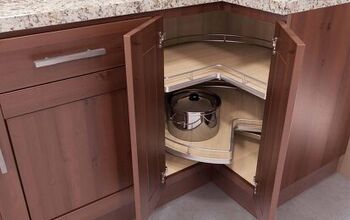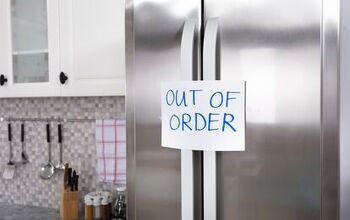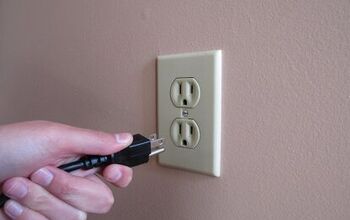How To Save Time Watering Plants

Garden maintenance takes a lot of time and patience. That’s why many homeowners would do anything to save time in the garden. This is why you’re not alone if you’re wondering how to save time watering your plants.
You can save time watering plants if you install a drip irrigation system or make a DIY irrigation system. For example, you can cut holes in an empty jug, bury it, and let water seep into the soil over time. Otherwise, you can save time if you group your plants closely and stick to low-maintenance native plants.
Taking care of non-native plants typically takes much longer and can be quite frustrating. Follow along as we explore how to save time watering plants.
How To Make Your Watering Routine More Efficient
Saving time while watering plants takes some careful planning, as it’s all about efficiency. Doing so has more benefits than just shaving 10 minutes off your watering routine. You can save time in the garden with a few simple steps, such as:
1. Group Your Plants
Grouping your plants not only saves time, but it can also help you conserve water. You can save a lot of time watering plants if you carefully research how much water each of your plants needs. Next, you must rearrange your garden according to the amount of water each plant requires.
For example, you can keep drought-tolerant plants close to each other, so you know that section doesn’t need much water. Doing so can save time compared to soaking one plant, then barely watering the plant beside it. Now, you can easily move from section to section without stopping to think about how much water each plant needs.
Grouping your plants also opens the door to unique garden planning opportunities. You can arrange your garden based on type and region, which makes it feel like an official botanical garden.
2. Use A Timed Irrigation System
You’re not alone if you struggle to find enough time to dedicate to garden maintenance. Between work, family, and friends, it’s hard to justify watering plants for 30 minutes. However, you can save a lot of time watering plants if you invest in a timed irrigation system.
You can expect to spend at least $1,800 to install a sprinkler system in your garden. That said, you can save hundreds of dollars if you do it without professional help. The overall cost depends on the size of your yard and garden, so you may spend less than $1,800 if you have a small yard.
Installing a drip irrigation system starts at $450 to $700 per quarter acre, and that may be all you need. This is a great option if you have a small lawn and want to focus solely on your garden. Look for a drip irrigation system with a timer and set it to run early in the day.
3. Lay Mulch
Mulch can help you prevent weeds, regulate soil temperature, and save time watering plants. That’s because mulch can retain water, so it doesn’t drain too quickly. It can also prevent water from running off the surface, which would waste water.
A little bit of water goes a long way with mulch, especially if the soil beneath it has poor drainage. Granted, you must still water your plants deeply, but you don’t have to waste time due to runoff. You can expect to spend between $100 and $400 to mulch your garden.
4. Embrace The Shade
You’re not alone if you’ve made the mistake of putting shade-tolerant plants in the sun. They may still grow, but they’d most likely thrive much better in the shade. Shade-tolerant plants don’t need nearly as much sunlight as other plants, like marigolds and sunflowers.
You can inadvertently harm your shade-tolerant plants if you put them in full sunlight. It’s a waste of time to put them in the sunlight, as you must water them more than they typically need. Despite watering them heavily, excessive sunlight can still hinder the plant’s growth.
Shade-tolerant plants often require less water than plants that thrive in full sunlight. Move your shade-tolerant plants to the shade to save time, water, and gardening stress.
5. Put Water Jugs In The Soil
Some people don’t want to spend a fortune on installing sprinklers and drip irrigation systems. That is understandable, and those expensive systems aren’t your only option. You can save time watering if you repurpose old water jugs and bury them in the soil.
Rinse out an old water or milk jug, then dig a hole in the soil in your potted plants and garden beds. Drill a few holes at the bottom of the jug and bury it with the holes facing down. That way, water will enter the jug, drain into the soil, and automatically water your plants.
Be careful about the size and number of holes you drill. You don’t want to drill huge holes, as doing so can make the water flow too quickly. It may take some trial and error, but it will pay off when you save time gardening.
6. Water Plants As Needed
Whether you know it or not, you may have watered some of your plants when they didn’t need it. Doing so is sometimes harmless, but it can damage your plants in some cases. That’s especially true if the soil is already quite damp before you water your plants.
Ideally, you should touch the top layer of soil to see if it feels damp or dry. The top 2 inches of soil can tell you whether or not you need to water the plant. You can typically leave the plant alone if the top 2 inches of soil feel damp.
Pay attention to how the plant looks, including the leaf color and how the stems and branches stand. If it’s droopy, it may be overwatered or underwatered, so check the soil to confirm it. Never water a plant with soggy, overwatered soil, as doing so can harm the roots.
7. Plant Native Plants
Taking care of non-native plants takes a lot of time, and it’s frustrating. That’s because they aren’t meant to thrive in your climate zone, so they may require special care. This includes spending more time watering them and even using special soil, nutrients, and fertilizers.
Naturally, this can waste a lot of time and water in the garden. Luckily, you can avoid this problem if you prioritize native plants, as they’re meant to thrive in your area. Native plants are accustomed to the weather patterns and temperature fluctuations where they’re from.
That means that you don’t have to bend over backwards to take care of them. Planting native plants can ensure better outcomes and help you avoid annoying problems. Look into the local native plants and pick the ones that are the best fit for your garden.
8. Water When It’s Cool
You’ve probably noticed that watering plants in the middle of the day can take a long time. That’s especially true during the peak of summer when it gets hot. Luckily, you can save time watering if you do it in the morning before it gets too hot.
Some people even wait until the evening when the temperatures have dropped a little. That said, waiting until the evening can be risky in some cases, especially on particularly hot days. Watering in the morning ensures your plants have water to sustain them throughout the day.
It may take some trial and error to see whether early morning or evening is the best time to water your plants. However, you must not intentionally overwater your plants in the morning to help them retain water all day. Doing so can backfire, and they only need enough water to ensure the top 2 inches of soil are damp.
9. Buy A Great Hose Nozzle
The hose you use has a lot to do with how long it takes to water the plants in your yard. Naturally, you can’t cover too much ground with a narrow nozzle, which can make watering your plants take longer than it should. Conversely, a wide nozzle lets you cover more ground, but it comes at the cost of less precision.
You can enjoy the best of both worlds if you buy a hose nozzle with several nozzle width settings. That way, you can quickly adjust the water spread as needed. For example, you can use a wide setting to cover a tight group of plants, and switch to a narrow setting to target specific plants.
10. Cut Back
You’re not alone if you bought and planted more plants than you can handle at the moment. After all, getting new plants is exciting, and it’s easy to forget about how much work it takes. Carving out enough time in your schedule to water a lot of plants is hard when balancing other responsibilities.
There’s nothing wrong with cutting back if you accidentally bite off more than you can chew. You can always give a few plants to your friends and family, or simply donate them to a plant nursery. Doing so will save time, money, and water.
Summing It Up
The easiest way to save time watering plants is to group your plants closely to quickly cover more ground. You can also save time if you move shade-tolerant plants out of the sunlight and check the soil to see if they need water that day. It also helps to water your plants before it gets hot and bury old jugs in the soil to make a DIY drip irrigation system.
Related Guides:

Nick Durante is a professional writer with a primary focus on home improvement. When he is not writing about home improvement or taking on projects around the house, he likes to read and create art. He is always looking towards the newest trends in home improvement.
More by Nick Durante










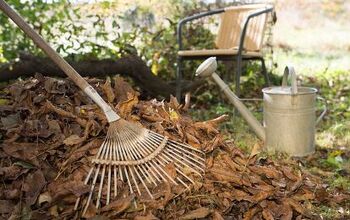
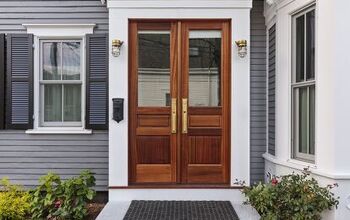
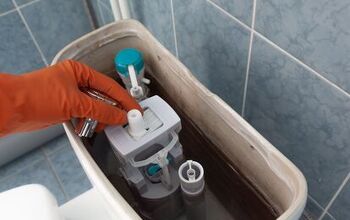
![The 10 Best Table Saws - [2022 Reviews & Buyer's Guide]](https://cdn-fastly.upgradedhome.com/media/2023/07/31/9070645/the-10-best-table-saws-2022-reviews-buyer-s-guide.jpg?size=350x220)
